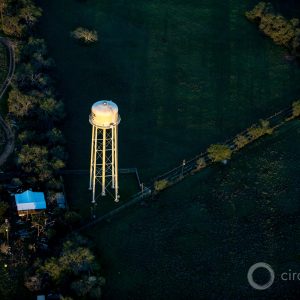The Stream, April 30, 2020: Czech Republic Faces Worst Drought in 500 Years
The Global Rundown
Communities in the Czech Republic may exhaust their water supplies as the country faces the worst drought in 500 years. Low water levels in the Mekong, plus challenges caused by the Covid-19 pandemic, imperil food security in Cambodia. Drought-hit Argentina struggles to provide water as the coronavirus crisis unfolds. Human activity and climate change continue to degrade the U.S. Great Lakes. More than 5 million Yemeni children are at risk from cholera and diarrhea as the country receives a deluge of rain.
“We are facing an unprecedented drought period, both in its duration and its impact. Smaller rivers will dry out, there may be tens, perhaps hundreds of communities supplied by cisterns, because their sources may dry out.” –Richard Brabec, the Czech environment minister, in reference to new data showing that the country is enduring its worst dry spell in 500 years. A new map produced by the Environment Ministry shows that three-quarters of the country is facing extreme drought, while only 0.1 percent is experiencing a normal level of water in the soil. Conditions in the Czech Republic have been drier-than-average for the past five years. Thomas Reuters Foundation
Latest WaterNews from Circle of Blue
Perspective: How Does the Coronavirus Crisis Compare to the Global Groundwater Crisis? — Global efforts on the scale of those to curb the devastation of SARS-CoV-2 are few and far between. These months could provide a template for reducing future environmental damage.
Flood Study, With Fresh Approach, Measures Downside of Pavement — Using statistical methods borrowed from economics, a new study estimates the effect of hard surfaces on high waters.
By The Numbers
48 million+ U.S. citizens who rely on drinking water supplied by the Great Lakes. Landmark environmental laws in the 1970s alleviated heavy industrial pollution in the lakes, but new problems resulting from human activity, like fertilizers from farms and lawns, are continuing to emerge. The lakes have also been affected by climate change, experiencing a rise in toxic algae blooms and other phenomena linked to warming temperatures. The Conversation
13 percent of normal Current flow of the Iguazu River, which feeds Iguazu Falls, one of South America’s major tourist hotspots. The falls, plus most Argentinian waterways, are shrinking to a trickle as drought overwhelms the country. South America’s current rainy season is drawing to a close, meaning that Argentina likely faces another several months without adequate precipitation. The drought and the coronavirus crisis are constricting water access in several communities. Reuters
Science, Studies, and Reports
Heavy rainfall is deluging parts of Yemen, leaving 5 million children at risk of cholera and Acute Watery Diarrhea, the United Nations warns. The severe weather could also raise risks associated with Covid-19, although only a single case has been confirmed in the war-torn country so far. UNICEF
On the Radar
Countries along the Mekong River are struggling in the face of severe drought, but Cambodia is among the hardest-hit. In December of last year, the country reported that 45,000 hectares of rice paddies had been devastated by drought, and a majority of the country continues to grapple with freshwater shortages. The coronavirus pandemic is further exacerbating food security concerns in the country. Foreign Policy
In context: One By One Big Hydropower Dams Disrupt Mekong River’s Free Flow.
Kayla Ritter is a recent graduate of Michigan State University, where she studied International Relations and Teaching English to Speakers of Other Languages. She is currently based in Manton, Michigan. Kayla enjoys running, writing, and traveling. Contact Kayla Ritter





Leave a Reply
Want to join the discussion?Feel free to contribute!